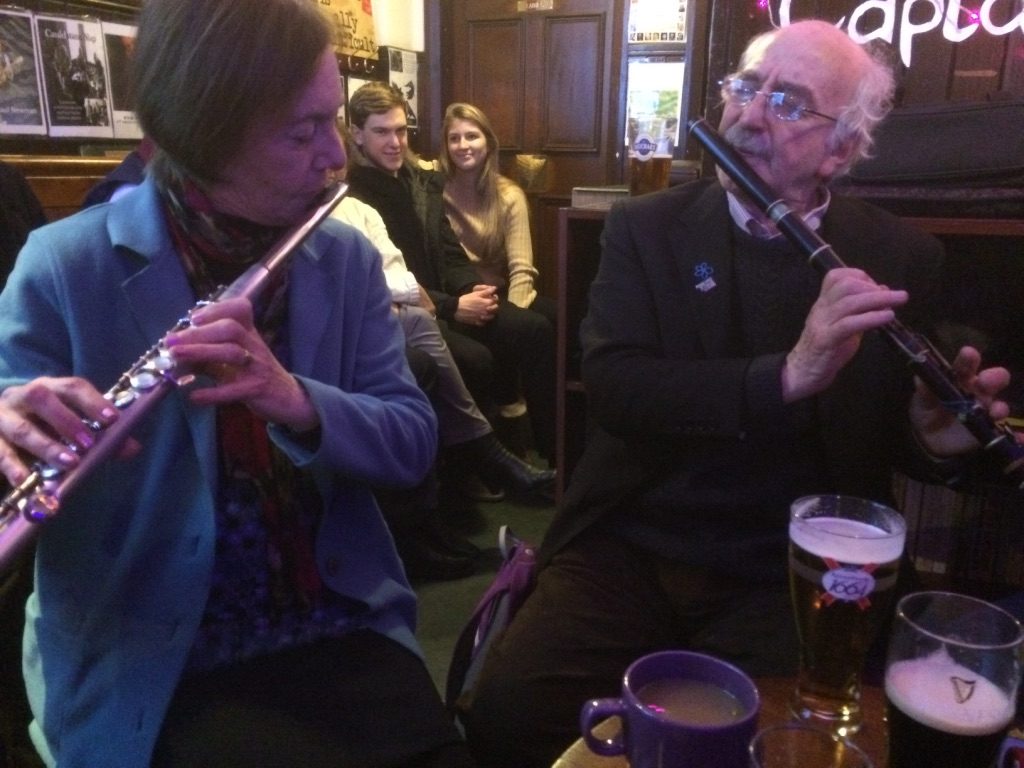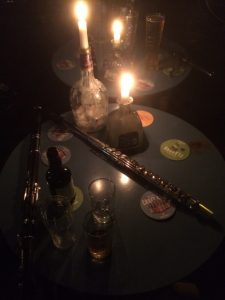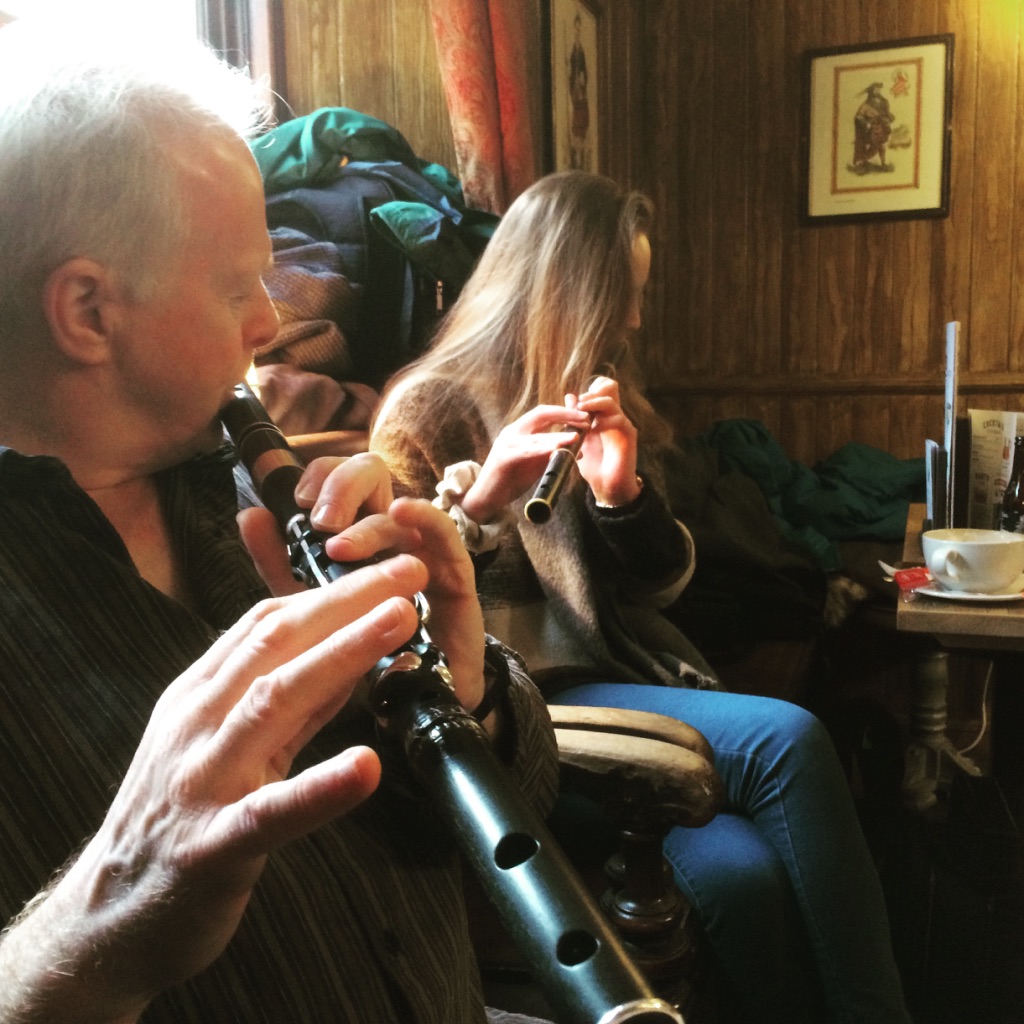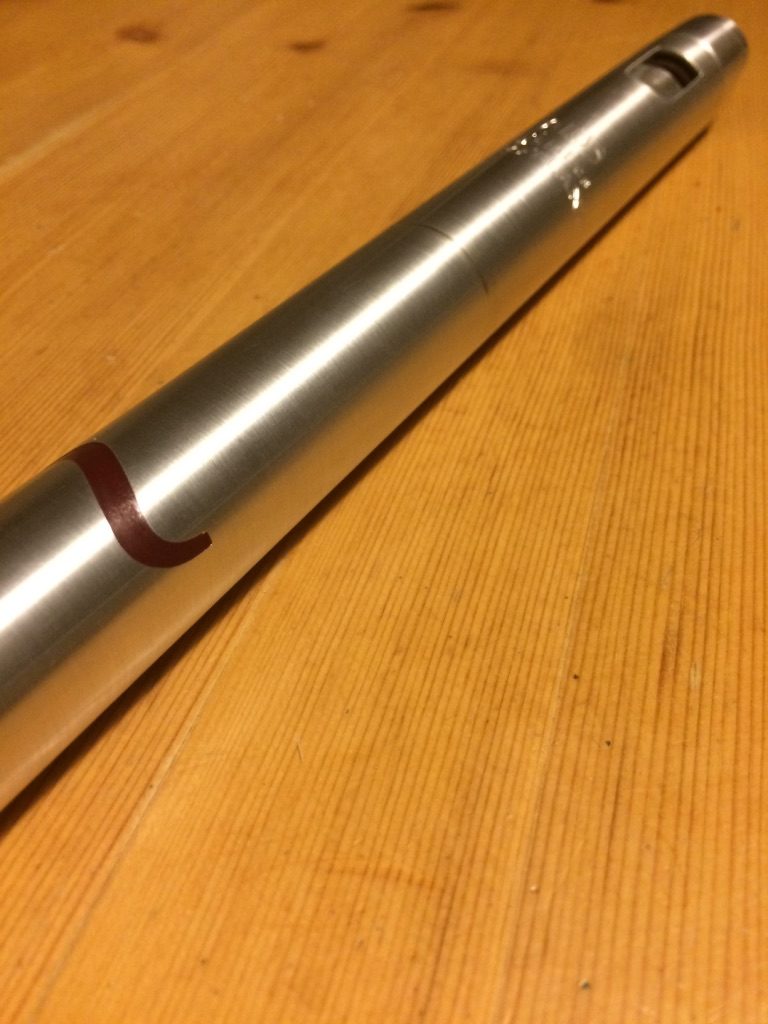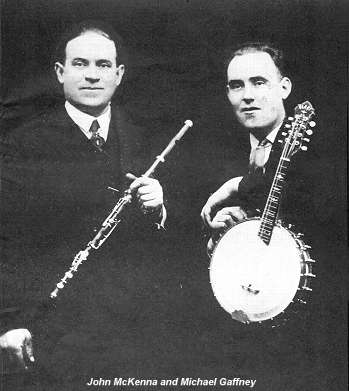A danger of running an event on the third weekend of the month is that eventually you get to December and meet Christmas head-on. When that happens, it’s hard to know what to expect. So when Kenny Hadden said he would come down that weekend, I jumped at the chance to get him to also do some teaching alongside me and it became something bigger than usual.
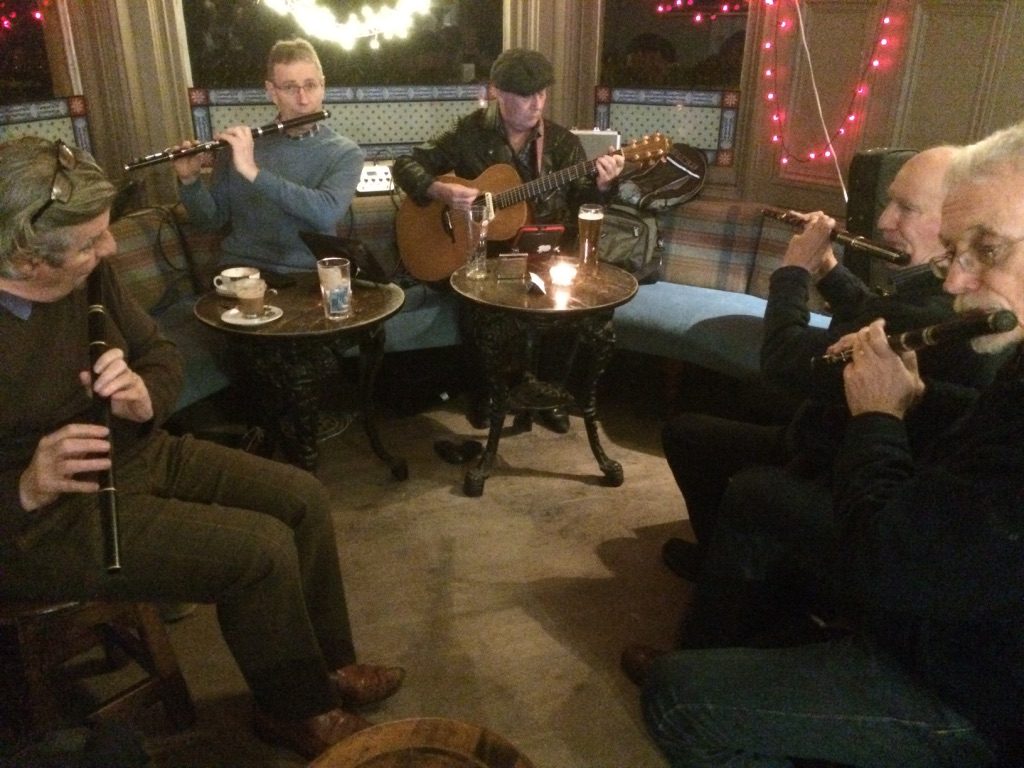
Flutes at The Dalriada: (l-r) John Corbett, Malcolm Reavell, Sean Paul Newman, Kenny Hadden, John Crawford. (c) Gordon Turnbull
John Crawford and Malcolm Reavell were also there, also from Aberdeen, and we went for a flutey session afterwards at The Dalriada with Sean Paul Newman welcoming as usual and providing accompaniment. Later that evening Sharon Creasey came along with Cathal McConnell to play at The Captain’s Bar. All in all a bit of a mini flute festival.
The workshop began with a slow tune to warm up: Caol Muile (The Sound of Mull), the air to a Gaelic song (Youtube link to a version sung at Plockton School). I have a version with some harmony parts and added another myself, so we had some fun trying them out. Grace notes and breathing came up as we added expression.
I followed this up with a reel that seems to be from Donegal and presented problems in pinning down a definitive version. We had one for the day and Kenny and I also had some variations. Scotch Mary can be found in various collections and with various titles. Irish Molly is one, Ireland Green is a title given by PJ Hayes and Martin Hayes too. Flute players John Skelton and Kieran O’Hare recorded it on whistles on their great CD Double Barrelled (link has a clip of the music).
The tune actually exists in three main versions, as two parts: A+B, B+C or three parts: A+B+C. To confuse things, the A and C parts are similar, there are different changes in other versions and key shifts too. The version I taught includes elements of these. Here’s a closely related Donegal version on Youtube played by Paddy, Seamus and Kevin Glackin. It’s the second tune in the set.
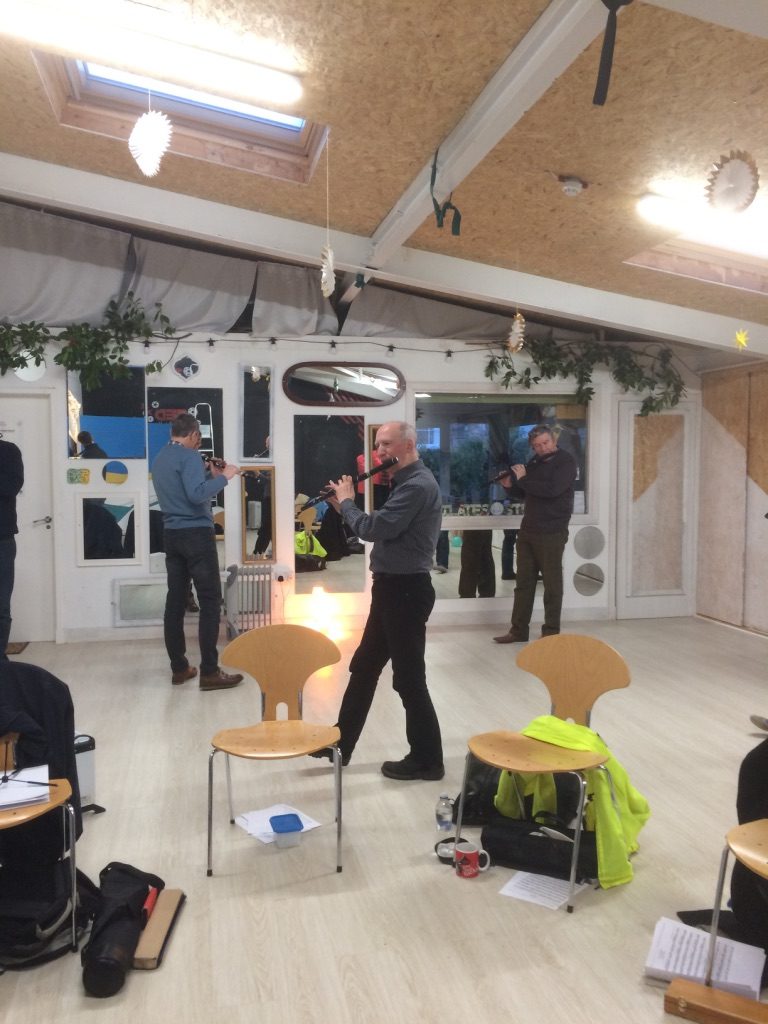
Kenny Hadden with others walking and feeling the rhythm while playing at the December FluteFling workshop.
Kenny took over after the break and kept the festive theme by teaching and sharing some tunes by Johnny Cunningham that were originally for a musical theatre performance on Peter Pan. Johnny and brother Phil studied at local Portobello High School so it was doubly apt for the location.
The first tune, Two is the Beginning of the End, not only had a strange title, but was in an enigmatic scale that served as a useful warm-up piece to get the ears tuned in. As it has actually been a good while since I found myself learning a tune by ear in a workshop, it was good to have the tables turned and be reminded of the experience.
The second tune Kenny introduced was more traditional, but recorded by Johnny Cunningham. The Celtic Society’s Quickstep (music and background can be round at the Traditional Tune Archive) is a dance tune first published in Kerr’s Merrie Melodies of the 1880s, but in existence since at least 1820. A delightful tune with some interesting jumps and straightforward runs that can be played with some bounce. It doesn’t seem to be played very much and could benefit from more exposure.
Resources for the tunes are to be found on the resources page for 2017. Two is the Beginning of the End doesn’t feature for copyright reasons, but those who attended will have something to work with. I will add The Celtic Society’s Quickstep very shortly.
Here’s Johnny’s version of The Celtic Society’s Quickstep, as recorded on Fair Warning:
Kenny has a YouTube channel with some rare archive video and TV footage, particularly of music from Scotland, that is worth exploring.
Finally, a wee plug for the Scottish Flute channel on YouTube, which has evolved out of the FluteFling workshops and sessions. Set up and run by volunteers and supporters in the Aberdeen area, there is some footage from the Aberdeen weekend in November and more can expected both from the archive and as more events occur.

